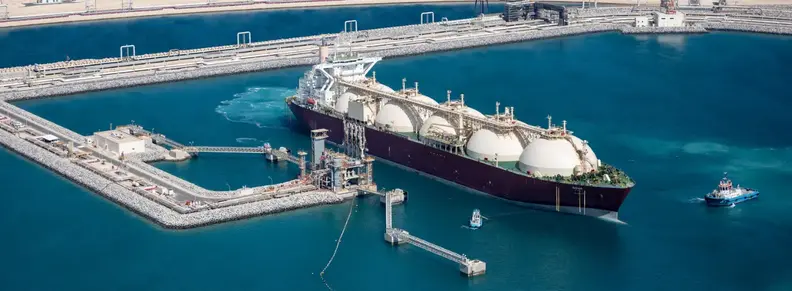
EU eases gas storage targets amid price concerns
Published: 30/07/2025
Read time: 4 minutes
The energy industry in the UK and Europe is undergoing a significant transformation, driven by shifting market dynamics and geopolitical uncertainties. In response to these challenges, the European Union has made pivotal adjustments to its gas storage targets, aiming to ensure energy security while stabilising prices for consumers.
Join Modou Mbye, Customer Hedging Analyst, in our latest blog, where he looks at the recent decision by the EU Parliament and member states to loosen gas storage rules from 90% to be met by 1st November each year, to 90% anytime between 1st October and 1st December each year. Modou explores the implications for member states, the flexibility allowed in achieving these targets, and the broader impact that Europe's energy strategy has on the UK, unravelling the complexities of these changes and what they mean for our energy future.
Over you to Modou…
Why does the EU have storage targets in the first place?
The EU initially set a 90% gas storage target to be met by 1st November in a bid to enhance energy security following the Russian invasion of Ukraine which brought about significant supply disruptions in 2022.
By setting such a high storage target, the EU intended to create a buffer against potential future shocks in the energy market, thereby protecting member states from sudden spikes in gas prices or supply shortages to ultimately reduce reliance on volatile external sources. The policy also sought to encourage countries to diversify their energy sources and invest in alternative supply routes, reducing dependency on any single supplier.
Why have the EU decided to change the targets?
Fast forward to 2025, market conditions evolved, and on 24th June, the EU Parliament and member states reached an informal agreement to extend the storage targets to 2027, allowing for deviations in certain market conditions as well as ease the rules of when the 90% target is to be attained. These changes give member states flexibility in reaching the target and achieving price stability.
The rules were softened due to a negative summer-winter price spread, where summer gas prices exceeded winter prices—undermining the usual economic rationale for gas storage. This reversal was driven by tight global gas supply, competition for liquefied natural gas (LNG) with Asian markets, and regulatory storage mandates forcing injections even when market signals discouraged it. The negative spread reduced the value of storage, making it less profitable for storage operators to inject gas during summer months and withdraw during the winter months, leading to concerns about whether facilities could meet mandatory fill levels without financial losses. Additionally, geopolitical risks—such as the halt of Russian gas transit through Ukraine—added further uncertainty, complicating storage strategies and prompting adjustments to the EU’s storage policy.
Initially, parliament was pushing to reduce the storage targets to 83%, however it is now concluded that the target will remain at 90% with permission for member states to deviate from the target by up to 10% if unfavourable market conditions, such as elevated gas prices arise. Reports have also confirmed that once the 90% target is met, it will not be required for member states to maintain that level until 1st December.
Subject to a formal approval the targets are likely to come in effect for winter of 2026 and 2027. It is also worth noting that these changes may also apply to the November target for this year if approved in time.
In the meantime, Germany has lowered its gas storage target to 70% from the previous 90%. This move highlights an alignment with the broader EU trend, with the hopes of enhancing market flexibility.
.webp?option=default&outputWidth=480&outputHeight=480)
Implications for UK Business Consumers’ Energy Bills.
The EU's decision to loosen gas storage targets and introduce flexibility in achieving these targets might stabilise energy prices in the short term for UK businesses and lead to more predictable energy costs. However, there are concerns about long-term energy security and winter readiness, as lower storage capacities might result in higher prices during winter months. So, I would encourage UK business customers to remain vigilant about potential long-term impacts and geopolitical risks that may affect their energy bills. The broader dynamics of the energy market will require careful monitoring and strategic planning to navigate future uncertainties.
Final thoughts…
The EU commission’s decision to both loosen and extend gas storage targets highlights the realities of market fundamentals and general European energy security. While flexibility will ease price pressures over the near future, it brings about concerns on longer term winter readiness and long-term energy independence of the European Union. The negative summer-winter spread highlights how regulation and storage policy can disrupt economic incentives for storage operators. Geopolitical uncertainties such as the trade wars and the continued Russia/ Ukraine situation further complicate long-term energy strategy across the continent. Ultimately, although the adjustment is likely to help with providing short to medium-term stability in the energy markets, the broader picture remains uncertain and could see more risk in winter contracts, due to lower storage capacities. Participants will be closely watching the definitive agreement around July.
Get in touch...
For further information on any of the topics covered in this blog, or to talk to our Energy Management team about your energy market needs get in touch today. We've a team of experts ready to help.
Please visit our BLOG pages to catch up with all our latest content and follow us on LinkedIn for regular updates!